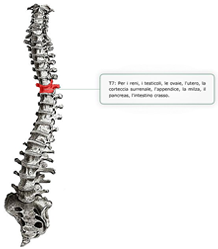Chiropractic for Hiatal Hernia and GERD
Hiatal hernia is known as “Great Mimic” because it can mimic many disease processes. Oftentimes, the symptoms are not local but are somewhere else in the body. Other times, a person may have had symptoms so long that they consider it normal. Gastroesophageal reflux disease (GERD) is included in this discussion because both hiatal hernia and GERD are involved with imbalances in diaphragmatic function.
Signs and symptoms
| Pain that can radiate into the chest or down an arm, with eventual relief after about an hour or more of acute distress | |
| What seems to be angina | |
| What seems to be an impending heart attack | |
| What seems like ulcer or gall bladder trouble (and often diagnosed as such) | |
| Pain in the sternum, often at night, that may radiate to the back, neck, jaw, ear, palate, shoulders or arms | |
| Regurgitation | |
| Heartburn (that worsens when bending over or lying down) | |
| Belching | |
| Shoulder pain | |
| Any digestive disturbances | |
| Jaw pain | |
| Neck pain | |
| Coughing | |
| Wheezing | |
| Asthma | |
| Throat soreness | |
| Laryngitis / hoarseness | |
| Hiccups | |
| “Food” fear with resulting weight loss | |
| Esophagitis | |
| Secondary anemia | |
| Difficulty or pain on swallowing |
Description
Hiatus Hernia: Protrusion of the stomach above the diaphragm. Gastroesophageal Reflux Disease: Reflux of the gastric contents into the esophagus.
Causes
A weak diaphragm will always be found when there is a hiatal hernia and/or GERD (except when a physical trauma is the underlying cause). When the diaphragm is not strong enough to keep the sphincter adequately tight, it allows the stomach to push up into the thoracic cavity.
Poor posture and sedentary lifestyle weaken the diaphragm. Thoracic kyphosis and lumbo-pelvic rotations are frequently found in association with hiatal hernia, as are verterbral subluxations in the lumbar, thoracic and cervical spine.
The nerves that stimulate the diaphragm exit the spine in two areas, the mid-cervical spine and the lower thoracic spine. If the vertebrae in these spinal areas are fixated or misaligned, there can be a reflex inhibition of the diaphragm.
If cranial bones are misaligned or limited in their normal respiratory motion, the capacity to breathe deeply can be inhibited. The diaphragm, like any muscle that is underused, will weaken over time.
Hiatal hernia and GERD are exacerbated by what one eats and how one eats. Food sensitivities and poor dietary habits deplete the body of necessary vitamins and minerals needed to produce gastric juices that are needed for proper digestion. Emotional traumas and chronic stress can also adversely affect the diaphragm in several ways. In stressful situations, you naturally tighten up and breathe less deeply. In this state, there is too much sympathetic nerve activity which means you are in “fight or flight” mode. As such, digestion is greatly inhibited.
Chiropractic / Applied Kinesiology Approach to Hiatal Hernia and GERD
Hiatal hernia is largely a mechanical problem and so corrections must be made mechanically. Dr. Morrison does this by applying gentle visceral techniques and traditional Chiropractic manipulation to the areas of imbalance and dysfunction. The result is usually immediate pain relief, followed by enhanced diaphragmatic function. Breathing is also improved, as rib cage expansion is augmented and the pelvis and vertebral column are re-aligned.
Home exercises and other lifestyle modifications will also be provided in order to maintain corrections. When indicated, nutritional supplements will also be prescribed. Lasting results are rarely possible without some degree of lifestyle modification. This means Dr. Morrison will work together with you to create dietary program tailored to meet your specific needs.
Back | Schedule an appointment
 SCHEDULE AN APPOINTMENT
SCHEDULE AN APPOINTMENT








